Audi eases — or adds to — sedan-SUV debate
Filed under: Weekly test drives, Autos
Maybe we can all get along, after all — that is, those who demand to buy, own, drive, and put fuel in an SUV, and those who resist the SUV trend and think we should all be driving cars.
Audi is in the position of many car-makers these days, and doesn’t particularly care which you choose, because it provides several excellent examples of both from which consumers can choose.
The remarkable thing about Audi is they can reach any reasonable compromise, with midsize vehicles such as the A5 Sportback 2.0T sedan, and the Q5 2.0T midsize SUV, which might provide the best example of how you can pick either one, and not possibly miss.
By absolute luck of a scheduling quirk, I got one of each of those Audis to drive for the same week in wildly fluctuating mid-winter weather that went from surprisingly mild to unsurprisingly harsh, sometimes in the same day. Such is life in Duluth, Minnesota, on the glorious — and sometimes unyielding — North Shore of Lake Superior. A blizzard here, some below-zero temperatures there, and all in all, it gave us a fantastic opportunity to try, and to appreciate, all of the creature features that make Audis among the world’s finest driving machines
While the A5 Sportback has its wonderfully sleek lines — better, I think, than the longer Sportback version of the longer, costlier and more exotic Audi A7 sedan — the Q5 is a very neat size that drops in between the larger Q7 and the compact Q3, and has a unique look of its own.
The worldwide trend of the last few years has been to try to meet new and exacting emission and economy standards by reducing engine size without eliminating driving satisfaction, and the answer has been to use turbocharged 4-cylinder engines where V6 or even V8 power-plants formerly resided. It’s a technique that everybody is trying to perfect, and the advantage Audi has is that it, and parent Volkswagen, have for years been using and perfecting a 2.0-liter 4-cylinder, turbocharged engine to give V6-type power with far better fuel efficiency.
For example, take the latest 2.0-liter Audi 4 with direct injection, and turbocharging. You can tweak it through the computer up to 252 horsepower and 273 foot-pounds of torque. That is sufficient to move the A5 Sportback to its more-agile best, through Audi’s traditional quattro all-wheel -drive system, regulated by a 7-speed S-tronic automatic transmission that is not only smooth shifting, but can be manually overridden by steering-wheel-mounted paddles.
And, get this: That exact powertrain can be placed on a stiff, rigid platform, and then you could set a sleek, artfully crafted A5 Sportback body on it, or you could set a neatly contoured midsize Q5 SUV body on it. In this case, both vehicles have the 2.0 turbo 4, with the same 7-speed transmission, the same quattro AWD system, and with even the same horsepower and torque figures.
For those wondering how to afford one over the other, the sticker prices also are very similar. The A5 Sportback with the Prestige package goes up from a base price of $42,600 to a sticker of $55,400. The Q5 with the Prestige package starts at $41,500 and lists as equipped for $56,100. Read more
Redone 2019 Ram moves to top of pickup class
Filed under: Equinox, Autos
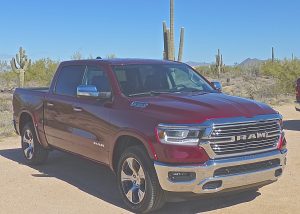
New Ram features dramatic changes from grille to interior, frame, ride, handling, powertrains, and capability for 2019.
SCOTTSDALE, Arizona
If there was any pressure on FCA to come up with a bold, new pickup with the latest generation of the Ram 1500, you couldn’t prove it by the truck itself, or how superbly it performs in any and all conditions. The new Ram is the 2019 model pickup, and maybe that’s appropriate, because if anything it is an advanced look at what a modern, contemporary pickup truck can be.
It’s old news that the largest selling car in the U.S. if a truck — the Ford F-150, and that the second-largest selling car in the U.S. is also a truck — the Chevrolet Silverado. It is less-well-known that the No. 3 best-selling car in the U.S. is also a truck — the Ram, previously the Dodge Ram.
Competition among those three is ferocious, to say the least. And with the newly revised F-150 and upcoming Silverado, there was some pressure on FCA, and Dodge, to recreate their Ram pickup carefully. It is done, now, as a 2019 model, just released for the first introductory drives by auto media on the desert highways and sand washes of Arizona. My partner and I were equally impressed, and we are experienced enough that just naming something new is not going to dazzle us. Mostly, we liked the interior room, and design, and more than anything else we repeatedly raved about how silent the Ram was inside.
The 2019 Ram 1500 half-ton pickup was first shown at the Detroit International Auto Show in January, and it made quite an impression. Dodge has broken various new trails in the pickup world, which is what you do when you’re No. 3 and don’t want to accept that status sitting still.
John Opfer, exterior designer of the new Ram, reminded us that it was back in 1994 that Dodge unveiled its radical new design with the “Big Rig” Ram. To me, it took the somewhat squarish pickup front end and made it look more like a diesel train coming at you, with a massive grille and high, aggressively lunging shoulders for front fenders. That polarizing style, as well as a group of Hemi V8 engines, helped the Ram break into the tight competition between Ford and Chevy.
On the 2019 model, Opfer says, “We have a modern iteration of the Big Rig.”
I don’t think so, although it’s understandable Ram might be reluctant to give up its big, bold trademark image. It seems to me that while Ford and Chevy, and maybe Tundra and Titan, have been getting more and more aggressive in styling perhaps because of the Ram, so the new Ram backs off a bit. Instead of the familiar massive stacked grille, the new one has a refined look with the grille more of a horizontal oval, split by a stylish horizontal bar, which stops in the middle to allow imbedding the letters “RAM.” A nice touch is that fitted right into the small gap at the bottom of the “A” is the forward camera, which works within a system for forward-collision warning, which converts to braking assist if a collision appears imminent.
If the new Ram looks sleeker, don’t believe for a second that it is anything but huge. as Jim Morrison, the head of Ram Brand, explained. “This is the largest truck in the segment, with a 4-inch increase in length,” Morrison said. “That allows us to have a larger interior, which is 3 inches longer in the rear seat alone, which can now recline. Not only is Ram growing, but it also has the highest loyalty rating among pickups. We are attracting new customers, and keeping them.” Read more
Car-show kids: ‘Let’s play trucks!’
Filed under: Features, Autos
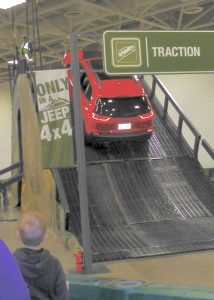
A young boy implored his family to stop and watch the Jeeps master the Camp Jeep obstacles at the Minneapolis Auto Show.
“Hey dad! Look! Look! LOOK,” the little voice grew bigger as the young lad yelled. His urgency demanded to interrupt his dad’s intention of casually wandering around the Minneapolis Convention Center to take in the Greater Minneapolis Auto Show.
The dad probably wanted to move along, but they weren’t going anywhere, for a while. The young boy had stopped, transfixed, next to Camp Jeep, which has got to be the best marketing ploy at this or any auto show. People can actually drive — ride with experts — in an assortment of new Jeep vehicles, including the Wrangler, Renegade, Compass, Cherokee and Grand Cherokee. But not just a ride. They follow the carefully built track that twists around and goes up and down at side angles, heading toward an amazingly steep hill, right there in the middle of Camp Jeep.
As the various Jeeps surged up the rise, we all stopped to see if it would make it. Of course they all did, up and over, disappearing over the other side. I have seen many Camp Jeeps, at many large auto shows, but it seems extra special right here in Minnesota, downtown Minneapolis. I was able to walk on, but the young dad and his little kid were still there — and might have remained right on through the March 18 final day of the show.
Kids love to play with cars and trucks, and it seems like the smaller the little boy, the more excited he is to watch every move a truck, or a Jeep, can make. In the grownup world, we are too confused to appreciate such simple pleasures.
For example, as I visited the Minneapolis show, I was road-testing two vehicles that were at the show. One was the all-new Toyota C-HR, the other a new Cadillac CT6 3.0 TT sedan.
Both are interesting. The CT6 is a beautifully designed sedan that seems traditionally Cadillac — long and low and shapely, with seriously engaging grille and headlights, and all the comfort and safety features you can imagine, along with a few that maybe you can’t. The C-HR is Toyota’s bid to try to capture some of the small-SUV fans who may be tempted to veer off course and buy a small Honda, or Mazda, or maybe even one of those somewhat odd Hyundai Velosters or Nissan Jukes.
The Veloster and Juke look like they might be related, with odd bulges and contours that are way out beyond the norm. Walk around the Veloster and you’d be impressed that it looks like a 4-door from the passenger side, but a 2-door from the driver’s side. It is, of course a 3-door, and Hyundai has just redesigned it to round off the bulgiest bulges for 2018.
If Toyota is taking on those outliers — as opposed to Outlanders — it has done the design part, because the C-HR looks like a prototype for all the new subcompact SUVs, and the price was right, at $24,000. However, up in the Great White North of Northern Minnesota, a lot of us think it’s borderline criminal to build an SUV-ish vehicle that is not an SUV. All-wheel drive is not available on the C-HR!
So it is an SUV-looking thing that is front-wheel-drive only, making it sporty in acceleration and lightweight, powered by its 2.0-liter with 144 horsepower and 139 foot-pounds of torque, but if you encounter a 12-inch snowfall in your driveway after driving home from the auto show, you might curse Toyota’s trendy maneuver.
The Cadillac CT6, on the other hand, has the potent new direct-injected dual-overhead-cam 3.0-liter V6 with cylinder deactivation — and, it does have all-wheel drive. In other words, we are confused enough that we now are looking at a full sail luxury sedan from Cadillac that can do the job of an SUV because it has got AWD, and an SUV-like compact from Toyota that can’t even pretend to be an SUV, because is hasn’t.
Meanwhile, the young lad doesn’t care about any of that stuff because he’s still transfixed by the Jeeps, which continue proving what you see is what you get, scrambling up those hills.
Camp Jeep now has spun off rivals. Mitsubishi, for example, also has a driving experience, promoting its comeback attempt with the Outlander, Outlander Sport, and its new Eclipse Cross. The Outlander PHEV is the first electric crossover SUV with all-wheel drive, and the Eclipse Cross has an available 1.5-liter turbo. Hyundai, meanwhile, is showing off its new Kona, a slick styling exercise that is more compact than the Tucson, and should go some, with a 1.6-liter turbo and Hyundai’s excellent dual-clutch 6-speed.
Ford is showing off its new Mustang Bullitt, a model to take advantage of the still-memorable movie “Bullitt” with Steve McQueen at the helm of a dark green Mustang. We’ve seen the new Bullitt before but both the Outlander PHEV and Eclipse Cross are making their public debuts at the Minneapolis show. That’s impressive for a show that is not one of the nation’s super shows, such as Detroit, Chicago, Los Angeles or New York. It’s put together by dealers in the Twin Cities, but it is the 15th largest show in the country, and they have caught on, employing a slick PR outfit, Nemer-Fieger, with an energetic young representative named Molly Steinke who has been doing her best to reach the media and entice them to visit the show. They also have a very neat program, with capsules on all the new cars you might be interested in, rather than just an ad-carrying sheet.
The Cadillac CT6 was a pleasure to drive from Duluth to the Twin Cities for the state high school hockey tournament, which, as usual, featured some games that could be put away in a time capsule to show all that’s good about living in Minnesota. It was a tough squeeze to fit in a Saturday morning at the auto show on press introduction day, and it was a shame to waste all that rear-seat room, which could easily accommodate two large adults in glorious luxury. With a turbocharger blowing through the 3.0 V6, the CT6 develops 404 horsepower and 300 foot-pounds of torque — more than the traditional top 3.6-liter V6.
Suspension and handling, to say nothing of the enormous trunk space, are exemplary in the Cadillac, although I would need about a month to get comfortable with its elaborate “CUE” system. You can, for example, figure out how to tune the radio without getting too many fingerprints on the big touchscreen, but while you’re figuring out what Cadillac was thinking with the complexity of controls that once were far easier with a round knob, be careful — if you sweep your finger across the dial, too close to the screen, you will make the volume go way up, or down, depending on which way you sweep.
The C-HR has plenty of pep from its 4-cylinder, and, after you fiddle with the adjustments enough, you learn that it has a control to allow you to be in normal, eco, or sport, and sport firms up the suspension and gives a dose more power to a touch of your toe, even though the CVT transmission will do its best to quell any sporting thoughts. Just as well, because the lack of AWD meets the drone of the CVT about halfway.
Meanwhile, back at the auto show, Chevrolet, Ford, Toyota, Mazda, Jaguar, Land Rover and Volkswagen are all offering brief test drives in assorted models.
Volkswagen has Jettas and Passats for test-drives. No, you can’t drive the new Alteon, but there is one on display, an impressive looking sedan that owes its sleek silhouette to being the replacement for the sleek but discontinued CC. The Alteon is pre-production and stays locked on the pedestal, while Volks is pushing test drives of its new Atlas, Alltrack, and Tiguan — VW’s posse of SUVs.
Yes, Volkswagen, perhaps the world’s most traditional maker of compact and subcompact cars with the Beetle, Rabbit and Golf, is now up to its headliner in SUVs.
And the little boy at Camp Jeep remains the only one not confused by it all.
2018 Mazda CX-3 churns on true vector through snow
Filed under: Weekly test drives, Autos
By John Gilbert
Last summer, I had the occasion to test a 2017 Mazda CX-3 for a week, and while I was impressed overall, even though there were a couple of things that concerned me. What didn’t concern me was the flashy design and appearance of the CX-3, which has an interesting assortment of creases and contours, all of which harmonize into a thing of beauty that other SUVs, and even Mazda’s larger ones, can’t match.
I continue to stress that my belief is consumers should select the “smallest utility vehicle that is large enough,” because enormous, truck-based SUVs that nearly went the way of the dinosaur when the gasoline prices spiked, spend most of their days hauling around a lot of extra size and weight and guzzling fuel during the 90-percent of their driving devoid of the van-full of people and/or camping gear.
From that standpoint, I suggest continuing to road-test SUVs smaller that what you may desire, until you find one that meets your demands and still is more compact and agile to drive and can easily get twice the fuel economy of the big ones. The competition in that CUV (compact utility vehicle) is ferocious, and continues to get broader and more competitive by the month.
Look at Honda, with its Pilot, then its smaller CR-V, and now an even more compact HR-V. Toyota has the Highlander, then the 4Runner, and then the compact RAV4, and now has spread out into various smaller runabouts that may or may not even offer all-wheel drive — which is the primary reason folks wanted SUVs/CUVs in the first place. And Nissan has the Pathfinder, the Murano, down to the Rogue, and now the Rogue Sport, and a new one, the Kicks (as in, “Get your Kicks”) that is smaller still.
Mazda created the compact CX-5, which seemed perfectly aimed at the CR-V and RAV4 and Rogue, and they came out with the larger CX-9, and the smaller CX-3. All three perform with the best, and have the added and undeniable edge in sporty “fun-to-drive” that lives up to Mazda’s “Zoom-zoom” philosophy.
Last summer, while I had to admit the CX-3 was cramped in the rear seat and stowage room, it was amazingly fun to drive and agile, and I truly prefered the smaller 2.0-liter 4-cylinder engine to the larger and more powerful 2.5. The statistics showed the EPA esdtimates were only about 1 mpg different, but in my driving — smooth, steady, but with gusts of gustro — I was able to coax that CX-3 with the 2.0 up to 38.4 miles per gallon. And taht’s with AWD.
At a price of about $25,000, the CX-3 seemed to have all the assets that a couple with little kids, or an aging couple whose kids are gone, might want. My only reservation was the rear seat. And then my older son, Jack, who is about 5-11, and helps me a lot in creating this column and chipping in with my wife, Joan, to expand my experiences with test-drivers, arrived for a visit. He volunteered to hop into the rear seat, even though we warned him that it wouldn’t be comfortable.
He folded himself just slilghtly to fit into the rear door, and once inside, exclaimed that it was fine — not expansive, but spacious enough and designed to comfortably house a couple of adults. So as I gave the CX-3 back, I had to put a question mark next to the one concern I had.
Six months later, in the harshest time of winter in Duluth, Minnesota, I got a new 2018 Mazda CX-3. It, too, was gleaming pearlescent white, and it looked striking, even against the snow, which kept falling in differing dosages throughout the week. It looks pretty much the same as the 2017, and the magazines all kissed off the new one as being virtually the same. It’s not.
A couple of the features are important to Northern drivers, such as a heated steering wheel, automatic dimming and brightening headlights, and a little trick called “G-vectoring.” This is something a few automakers are getting into, but Mazda is, as usual, ahead of the technology race. When you have g-vectoring, it means your car will turn in and corner and slalom tightly in much quicker-reacting form. In Mazda’s scheme, it is a safety characteristic that redefines Zoom-zoom beyond reason.
As a driver, when you decide to make a quick turn or lane change, you know what’s coming, and you may or may not be impressed at how th vehicle responds. Your wife/passenger is more surprised, and goes through enough of what they call “head-toss” to be uncomfortable, tending toward car-sickness.
Mazda noted that what makes the car respond more quickly and more smoothly is to reduce the power to the outside front wheel just slightly, as it simultaneously softens the same wheel. That seems to conflict with the idea of stiffening the outer wheel, but the softening inspires your instincts to turn fully, and as you start to turn, the power and suspension reduction on the front outside wheel makes you realize your timing for the turn works. Besides, it only affects your steering instincts for a millisecond.
The real-world evidence that it works is that in a normal car, you swerve or turn or change lanes abruptly, and you find the urgent need to correct your steering input, which sometimes leads to over-correcting and the need to correct the correction. That, I’ve always maintained, is what throws you out of control. With Mazda’s brilliant technique, you may not feel any difference, and shrug it off as insignificant. But Mazda’s research shows that the driver rarely or never needs to correct, or over-correct, because the car goes where it’s steering more smoothly.
Your front-seat passenger will not notice the difference, either, but will get home without the queasiness or stiff neck.
Mazda put G-vectoring into the 2017 Mazda3, and Mazda6 sedans, and into the new CX-5, but the newest model of the CX-3 was already out, and missed the technology. That didn’t mean it was a bad car, but if you’re going to get a vehicle, you want it armed with the best technical tricks — particiularly in Minnesota, where we have hundreds of car-seeking deer who want to dash out and bang into any size or shape vehicle that might pass between them and their dusk watering path. Swerving smoothly doesn’t sound as catchy as Zoom-soom, but it is part of the idea.
What impressed us both was that even when the snow piled to inches that became a foot or so, the small, compact CX-3 stormed through it, you should pardon the expression. The Touring and Grand Touring varieties of the CX-3 have 18-inch wheels, and all-season tires, which could, of course, be upgraded to a more winter-beating variety. My favoirites remain Nokian WR-3 or WR-2 all-seasons.
But I also have to take issue with Mazda designers and engineers, who move to the larger wheels and tires for improved sporty handling, but without regard for another theory of mine. If you take a 16 or 17 inch wheel, mounted with a tire, then you increase the size of the wheel to 18 or even 20 inches, you must reduce the width of the tire sidewall to make it the same fit. In so doing, every time you hit a washout or nasty rough patch of pavement, the less cushioning provided by wider tire sidewalls is transmitted directly to you in the passenger compartment with jolting harshness.
We didn’t find our CX-3 too harsh, although it has a neat little toggle switch on the console that you can click into “sport” setting. It firms the suspension, quickens the steering and allows the exceptional 6-speed automatic to hold its shiftpoints longer. We found the CX-3 actually felt better in sport mode.
I was briefly disappointed when my readings disclosed a best gas-mileage figure of 30.2 mpg, until I realized that we spent much of our time with the CX-3 when temperatures were either single-digits or below zero, and every car or truck I’ve ever tested can’t match its best mileage of summer during severe cold. You want to warm up the car briefly, and severe cold simply requires the computer to let in more fuel to the air-fuel mixture.
Another word of praise is due for the 6-speed automatic transmission, built in-house by Mazda. You can still get a 6-speed Mazda manual shift for the CX-3, which is outstanding, but almost all competitors have given in the the CVT trend, and the annoying hummmmm of the continuously variable transmission reduces driving satisfaction, in my opinion. If you don’t believe me, test-drive any competitor with a CVT, then drive the CX-3 with its smooth-shifting and quick 6-speed automatic, and with the available paddles on the steering wheel, you will be zoom-zoomed to appreciate the difference.
Now we’re torn. We’d like to purchase a small, fuel-efficient SUV, and we have several in mind. We know the CX-3 can’t be set up to tow, and it has limited storage space behind the rear seat, and we have that cramped getting into and out of the rear seat. But with all things considered, the CX-3 has moved back up to the top of the class.
XC40 is new, stylish, agile — and still Volvo-safe
Filed under: Equinox, Autos
AUSTIN, Tx.
With snow up to our knees in Duluth, Minnesota, after a mid-February blizzard, I had two choices. I could (A) keep reviewing a half-dozen different SUVs, trucks, and AWD sedans that I have been driving to handle the snow and ice, or (B) I could escape to Austin, Texas, for the introductory media drive of the all-new Volvo XC40.
I chose “B.”
It was not just to avoid the latest mid-February storm, because to go, I had to miss some really good sectional high school hockey playoff games. However, I have been waiting for about three years for Volvo to create the XC40 and to get my hands on one, and seeing it on display at the Detroit and Chicago Auto Shows, I couldn’t resist.
Regular readers of my automotive reviews, in the Duluth Reader, or on the Newcarpicks.com website, know that my preference in SUVs is to go for the smallest one that’s big enough. Anything larger is wasted weight to haul around. Volvo has an exceptional XC90 SUV, which won Truck of the Year and outperforms larger SUVs. Volvo also has the XC60, which is a more compact midsize SUV with the same drivetrain — a sophisticated 2.0-liter 4-cylinder engine either turbocharged or both supercharged and turbocharged for amazing power, while still delivering impressive fuel economy. Both also feature Volvo’s long-standing tradition of building the safest vehicles on the road.
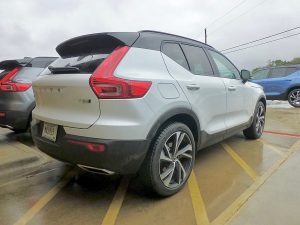
Fresh design varies from Volvo tradition, inside and out, pushing the XC40 to the forefront of contemporary style.
The XC40 comes along considerably more compact, and it shares in all those assets including the balanced handling and the vault-like safety structure, and the turbo 4, but it’s far from simply another downsizing exercise.
“Usually a new vehicle is based on an existing one,” said Anders Gunnarson, Volvo’s senior design manager. “But the XC40 started fresh. It is a cousin of the XC90 andXC60, but we wanted to give it its own identity. You can see the similarities, but also the differences. The XC40 is based on our new CMA — Compact Modular Architecture.
“Our objective was to give it three main things — expressive design, smart technology, and ingenious storage. It has true SUV proportions, with short, compact overhangs front and rear. As designers, we get inspired by things other than cars, and we chose the materials and colors for the interior carefully.
We drove the “Momentum” and the “R Design” models around downtown Austin, then out west of the city into the famous Texas Hill Country, where challenging winding roads become more challenging because Texans apparently don’t think enough of shoulders to put them on the outside of their 2-lanes. Volvo also makes an upscale “Inscription” model.
All of the XC40s can be bought with all-wheel drive, a $2,000 option on the front-wheel-drive base versions. All of the initial test cars had that impressive feature, which helps it snake around corners, and, presumably, would be an enormous benefit to those trying to scale the cliffs of Duluth in the snowstorms I left behind.
The powertrain is another example of Volvo engineering, with a 4-cylinder engine measuring just under 2.0 liters (1.969 cubic centimeters, actually). The now-familiar aluminum Volvo 4 has direct injection and is boosted by a turbocharger in the XC40, and its power ratings are impressive: 248 horsepower at 5,500 RPMs, and 258 foot-pounds of torque with that peak ranging from 1,800-4,800 RPMs. Miraculous, what these engineers can do with a strong design, turbocharging, direct injection, and computers coordinating it all.
An 8-speed automatic transmission is standard, and it does a very good job in the Momentum, which starts at $35,200 with all-wheel drive, although you simply put the gear lever into “D” for drive and let it go. In the sportier R Design, we had a separate sport-manual gate we could shift into for manual operation, plus it had steering wheel paddles, which convert the power and transmission from impressive SUV category to sport-sedan-like pep and fun.
The Momentum had 19-inch wheels, although 18-inch are the standard size on the base front-wheel-drive XC40. The R-Design my co-driver and I drove had 20-inch alloys. Designers love 20-inch wheels, because they like to draw their designs with large wheel openings, then they feel compelled to fill those openings with larger wheels than anyone needs.
Without a doubt, larger wheels — which have thinner tire sidewalls to duplicate the smaller wheels with thicker sidewalls — make your vehicle corner shaper and have more sporty precision around curvy roads. However, they also offer less cushioning from the narrower sidewalls, and can translate into harsh feeling on rough roadways.
I thought both XC40s we drove handled very well. MacPherson struts in front and a 4-link rear suspension with stabilizer bar kept us on the road no matter how we challenged it. And while we didn’t have anything resembling snow, we had steady rain threatening to turn into thunderstorms in, I hesitate to say, 72-degree temperature.
Naturally, the engineering technology came from the XC90 by way of the XC60, but one thing that prevents the lighter, more agile, and sportier looking XC40 in the mid-$30,000-and-up range is that Volvo officials have deduced that while customers want SUVs, and have made the compact-crossover SUV segment the fastest growing in the industry, customers also want all the creature comforts they can find in the larger SUVs.
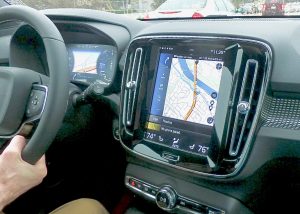
Enlarged navigation screen, clever stowage niches for computers and connectivity dominate the interior
Added to all those lane-departure and alerts to help you avoid accidents and physical intrusion if you still seem headed for one, the XC40 adds some specific interior tricks. Storage cubicles seem to be everywhere, and you could fit an iPad or a small laptop in form-fitted slots in the doors, and in storage drawers under the front bucket seats. There also is a build-in charge pad at the front of the console for your cellular phone.
Open the hatch and there is a roomy storage area, and it also has ingenius features such as a rear floor that folds up to offer security for grocery bags, and there are special hooks designed to hold more bags in isolation. A hidden compartment under the rear floor panel also is standard.
Standard equipment includes LED lights, digital gauges, leather seats, lane departure warning, and off-road mitigation, which actually will do its best to prevent you from drifting off the highway.
Those bucket seats, by the way, continue Volvo’s tradition of making simply the best, most comfortable, and most supportive seats in the industry. These are smaller and lighter, but just as comfortable.
Optional also is a Harmon Kardon audio upgrade which has 13 speakers and enough power to light Austin and parts of Dallas. Sitting in the rear seat, the separation and clarity of this audio system is exceptional.
After proving to myself that the XC40 lived up to the lofty standards I had set for it, all I could envision was the chance to get one for a week’s test drive in the Great White North of Minnesota. Preferably while there’s still snow to be churned through.


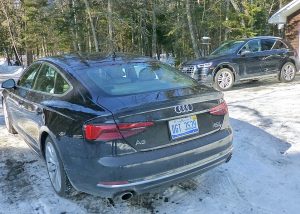
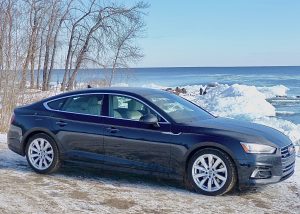
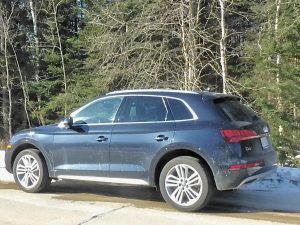
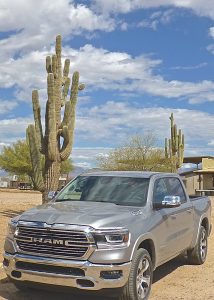
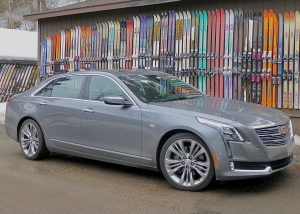
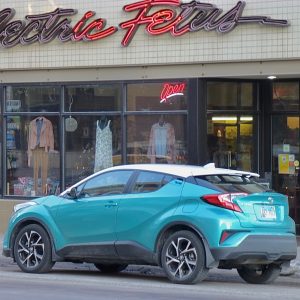
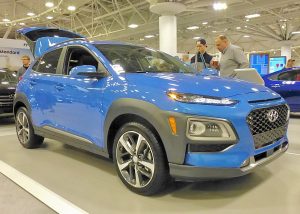

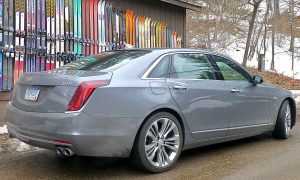
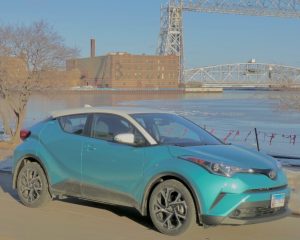
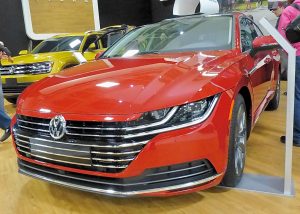
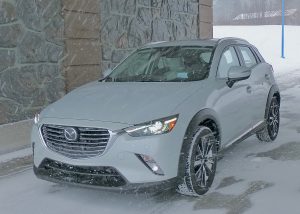
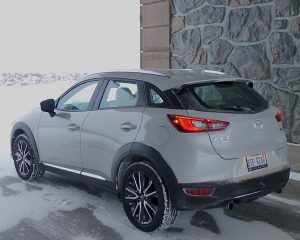
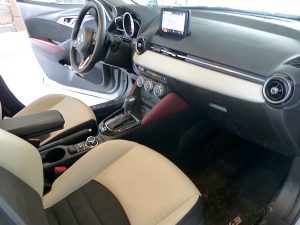
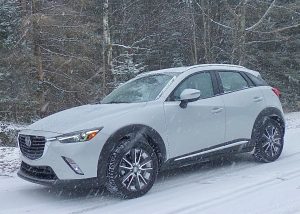

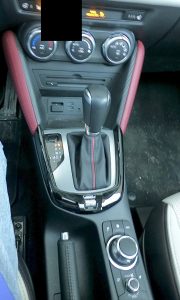
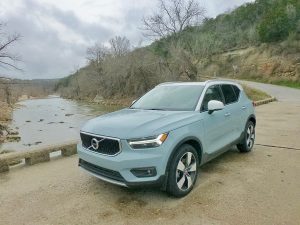
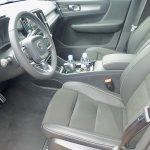
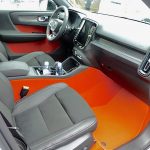
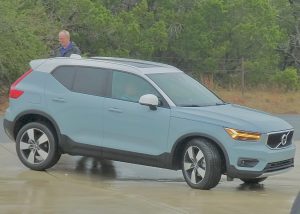
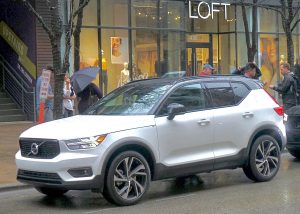
 John Gilbert is a lifetime Minnesotan and career journalist, specializing in cars and sports during and since spending 30 years at the Minneapolis Tribune, now the Star Tribune. More recently, he has continued translating the high-tech world of autos and sharing his passionate insights as a freelance writer/photographer/broadcaster. A member of the prestigious North American Car and Truck of the Year jury since 1993. John can be heard Monday-Friday from 9-11am on 610 KDAL(www.kdal610.com) on the "John Gilbert Show," and writes a column in the Duluth Reader.
John Gilbert is a lifetime Minnesotan and career journalist, specializing in cars and sports during and since spending 30 years at the Minneapolis Tribune, now the Star Tribune. More recently, he has continued translating the high-tech world of autos and sharing his passionate insights as a freelance writer/photographer/broadcaster. A member of the prestigious North American Car and Truck of the Year jury since 1993. John can be heard Monday-Friday from 9-11am on 610 KDAL(www.kdal610.com) on the "John Gilbert Show," and writes a column in the Duluth Reader.